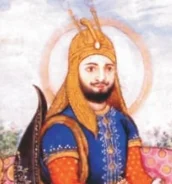![]() May 14, 2024
May 14, 2024
![]() 14509
14509
![]() 0
0
Sher Shah Suri (1540-1555 AD), born Farid, rose from humble beginnings to establish the second Afghan Empire in India. Renowned for his military prowess and administrative reforms, he conquered vast territories and implemented a highly centralised governance system.

| Must Read | |
| Current Affairs | Editorial Analysis |
| Upsc Notes | Upsc Blogs |
| NCERT Notes | Free Main Answer Writing |
Sher Shah Suri’s reign left an indelible mark on Indian history, characterized by efficient administration, infrastructural development, and military innovation. Despite his untimely demise, his legacy endured through his enduring contributions to governance, trade, and architecture.
<div class="new-fform">
</div>
Latest Comments